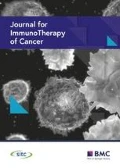Background
T-VEC is an HSV-1-derived oncolytic immunotherapy designed to selectively replicate within tumors, produce GM-CSF and enhance systemic antitumor immune responses. In OPTiM (NCT00769704), a randomized Phase III trial of intralesional T-VEC vs subcutaneous GM-CSF for unresected stage IIIB-IV melanoma, T-VEC significantly improved DR rate (partial response or complete response lasting continuously for ≥6 months; primary endpoint) vs GM-CSF (16% vs 2%, p < 0.0001). In the primary overall survival (OS) analysis of the ITT population, median OS was 4.4 months longer in the T-VEC arm than in the GM-CSF arm (23.3 months vs 18.9 months; HR = 0.79, 95%CI: 0.62-1.00; P = 0.051; Kaufman et al. ASCO 2014; abs9008a). Here we evaluate an association between DR and OS.
Methods
To avoid lead-time bias, OS was compared for those patients who were alive and who achieved DR vs those who did not at landmark times of 9, 12 and 18 months from randomization. A Cox proportional hazards model with achievement of DR as a time-varying indicator was also evaluated. Potential bias due to confounding was evaluated with sensitivity analyses adjusting for prognostic factor imbalances.
Results
The analysis included all patients in the T-VEC ITT arm (n = 295) who were alive at the 9 (n = 234), 12 (n = 209) and 18 (n = 165) month landmark times. At 9, 12 and 18 months, 20, 33 and 47 patients had a DR, and 214, 176 and 118 did not. For patients who had a DR vs those who did not, HRs for improved OS were 0.08 (95% CI: 0.01-0.56), 0.05 (95% CI: 0.01-0.39) and 0.13 (95% CI: 0.03-0.54) at 9, 12 and 18 months, respectively, indicating that achieving a DR is associated with improved OS. When DR was analyzed as a time-dependent covariate, the HR favoured patients achieving a DR (HR: 0.09; 95% CI: 0.03-0.29).
Conclusion
Achieving a DR was associated with marked decrease in the risk of death (> 85% across various analyses). Although the design of the study prevents demonstrating a causal relationship between DR and prolonged OS, it is reasonable to assume that achieving a durable response would lead to improvement in OS, and these analyses support that assumption. DR should be further explored as a surrogate for OS in patients with melanoma treated by immunotherapy.
Author information
Authors and Affiliations
Rights and permissions
This article is published under an open access license. Please check the 'Copyright Information' section either on this page or in the PDF for details of this license and what re-use is permitted. If your intended use exceeds what is permitted by the license or if you are unable to locate the licence and re-use information, please contact the Rights and Permissions team.
About this article
Cite this article
Kaufman, H.L., Andtbacka, R.H., Collichio, F.A. et al. Association between durable response (DR) and overall survival (OS) in patients with unresected stage IIIb-IV melanoma treated with Talimogene Laherparepvec (T-VEC) in the Phase III OPTiM trial. j. immunotherapy cancer 2 (Suppl 3), P91 (2014). https://doi.org/10.1186/2051-1426-2-S3-P91
Published:
DOI: https://doi.org/10.1186/2051-1426-2-S3-P91

